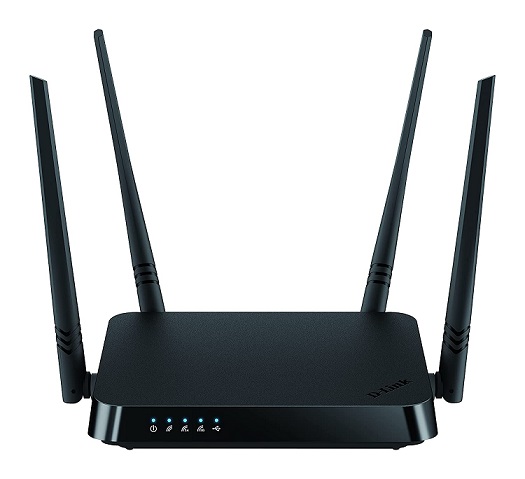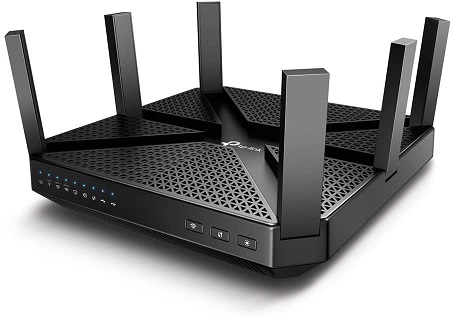Their differences help a buyer to understand which router is suitable for his purpose. In this article, we will discuss dual-band and tri-band routers in detail and compare them for your understanding.
What is a Dual-Band Wi-Fi Router?
A dual-band router can broadcast two signals in two different frequency bands. Under normal circumstances, it uses the standard 2.4GHz frequency band. When required, it uses the additional 5.0GHz frequency band. While the 2.4GHz frequency band is suitable for connecting devices at longer distances, the 5.0GHz frequency band is suitable for faster speed. A dual-band router is suitable for homes where the distance of the devices from the router is limited and speed requirement is optimal. Pros
Supports old and new devices. Stable connection and signal. Cheaper than a tri-band router.
Cons
Speed decreases with multiple connected devices. Not suitable for heavy internet consuming devices and activities.
What is a Tri-Band Router?
A tri-band Wi-Fi router can broadcast three signals. It uses one 2.4GHz frequency band and two 5.0GHz frequency bands. It can offer a blazing fast connection with two 5.0GHz channels. Tri-band routers come with built-in technology that helps in traffic management. Tri-band routers serve ideal who are looking for multiple connections without performance loss. It is particularly useful when you have devices situated at longer distances and demanding faster speed. It is mostly suitable for large homes and small offices. Pros
Two 5HGz channels ensure better performance. Better traffic handling and less congestion. Connection stays stable even with multiple connected devices.
Cons
Expensive than dual-band routers. Distance coverage is lower than dual-band routers.
Comparison Table: Dual-Band Vs. Tri-Band Routers
Dual-band vs Tri-band Wi-Fi Routers: The Reality
1. Connected vs Active Clients
A router works by sharing the Wi-Fi bandwidth with active devices. Even though there can be many connected clients, the ones that are active only matter. When there is a fast Wi-Fi connection, the client remains active for small-time as transmitting the information can be done quickly. A triple-band can handle more active clients thanks to more channels and wider bandwidth. On the other hand, a dual-band router can also handle multiple clients especially when some of them get inactive from time to time.
2. Wi-Fi Tiers
You need to keep in mind that not all active clients use the maximum amount of bandwidth all the time. In most homes, there is likely to be clients using different Wi-Fi standards, grades, and speeds. Triple-band routers offer a higher Wi-Fi tier with more channels. Therefore, more clients can connect to the router and get the desired speed all the time. Dual-band routers have a relatively Wi-Fi tier with two channels and lower bandwidth. If there are only a few active clients, a dual-router can perform as well as a triple-band router.
3. Applications
A dual-band router is suitable for a home where you need to connect only a few devices. Moreover, the speed requirement should not be high such as when you are doing multiple online streaming, playing online games from multiple devices, or streaming high-resolution videos and movies. For such high-speed demanding activities, the triple-band router is perfect. A triple-band router is suitable for apartments and small offices.
4. Internet speed
It is the internet speed that is the main difference between dual-band and tri-band routers. A tri-band router has a better internet speed than a dual-band router. The internet speed decreases significantly when you connect multiple devices to a dial-band router. If you connect the same number of devices to a triple-band router, the speed stays high and consistent. However, if you are connecting only a handful of devices, the speed stays the same in both the routers.
Will Tri-Band Routers Boost your Internet?
A tri-band router has two separate 5GHz networks along with an older 2.4 GHz network. It can automatically divide the devices so that there will be maximum bandwidth. A tri-band router can place each device into separate 5GHz networks without interfering with anything in between. It lets you achieve top speed even when you connect multiple devices. It may not speed up your internet as such but it ensures consistent high speed without slowing down as multiple devices start connecting. However, if you are upgrading from a dual-band router to a tri-band router, you will need enhanced internet speed, especially when multiple devices are connected.
Conclusion
We have discussed the functionalities and differences between a dual-band and a tri-band router. Both are meant to provide you with a stable internet connection even while connecting with multiple devices. When your devices do not support a 5GHz band, it will be pointless to have a tri-band router. A dual-band router supports older devices and provides greater coverage. You can opt for a tri-band router if you are looking to connect more devices to the wireless network. A tri-band router is also suitable for satisfying high data-consuming devices and activities. Comment * Name * Email * Website
Δ







![]()